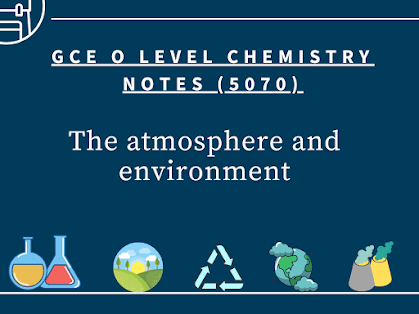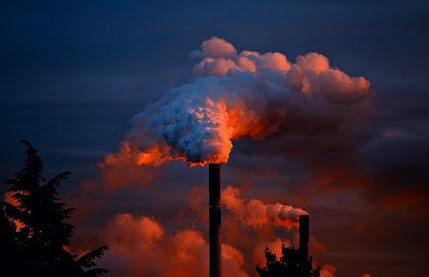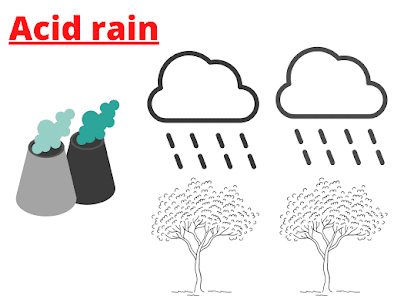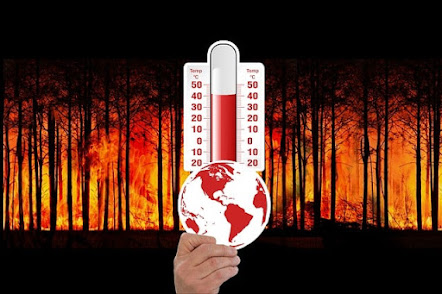The atmosphere and environment is a very important topic in GCE O level Chemistry (5070). There are multiple concepts in this chapter that need to be addressed.
Therefore, let's dive into the topic without further introductions and start from the very beginning of this chapter.
What is the atmosphere?
Our earth is surrounded by a layer or layers of gases known as the atmosphere.
In other words, atmosphere refers to the layer of air that is held by gravity. You should know that without the atmosphere, there would be no life on earth.
But, why is that so? Let me explain that in detail.
The atmosphere is a protective layer that serves as a shield to the earth and protects it from the harmful radiations from the sun. This action ensures that an optimum temperature is maintained on earth.
In other words, due to the atmosphere, the climate of the earth is moderate and it is a major reason why life exists on the earth.
We discussed earlier that the earth's atmosphere is made of air. Now you might be wondering, what does air consists of?
Similarly, you can also say that what is the composition of the atmosphere? Let me answer your question.
The composition of air:
You should know that the air is a mixture of multiple gases and it comprises of useful elements and compound.
The air comprises consists of:
- Nitrogen: 78%
- Oxygen: 21%
- Carbon dioxide: 0.03%
- Noble gases: 0.97%
Note: The planets in the solar system have a different atmosphere as compared to the earth. For instance, the atmosphere of Uranus consists mostly of hydrogen (83%).
At the same time, you should also be familiar with the concept of how do we separate air into its constituent gases?
How is air separated into its constituent gases?
- Firstly, the air is cooled and compressed so that we obtain air in liquid form.
Liquid air is then separated into its fractions by fractional distillation (a process to separate fractions of a liquid, based upon the boiling point of the constituents).
- Secondly, the liquid with the lowest boiling point is collected at the top of the fractionating column upon heating.
This is because the liquid with the lowest boiling point distils over first.
For example, when we conduct the fractional distillation of liquid air, Nitrogen is distilled first because it has the lowest boiling point (-196℃).
This takes us to another important topic in this chapter of the atmosphere and environment which is about air pollution.
Air pollution | Causes | Effects | Solutions:
The air we consume during breathing is not clean because it contains harmful chemicals.
In other words, when the air contains a very high concentration of chemicals that harm non-living and living organisms, we say that this condition is known as air pollution.
Many chemicals pollute our air such as sulfur dioxide, carbon monoxide, oxides of nitrogen and unburnt hydrocarbons.
Let's take a look at these chemicals in detail and learn how do they contribute to air pollution.
Sulfur dioxide and Carbon monoxide:
Coal, natural gas and petroleum (crude oil) are the fossil fuels that contain sulfur.
Therefore, when they are burnt (for example in industries), they produce sulfur dioxide. Similarly, the volcanic eruptions also release sulfur dioxide into the atmosphere.
Sulfur dioxide pollutes the air as this acidic gas can cause lung diseases, eye irritation, infections and coughing as well.
Likewise, inhaling this gas can cause irritation in the nose, eyes, throat and lungs which can lead to a sore throat and a burning sensation in the eyes.
On the other hand, Carbon monoxide is produced as a result of incomplete combustion of petrol in the car engines. This is an odourless (fragrance-free) and colourless gas.
Further reading:
Carbon monoxide is very harmful to the body because it displaces oxygen from the blood. As a result, the vital organs of your body can be deprived of Oxygen.
It can lead to unconsciousness, breathing difficulties and even death in severe cases.
Oxides of nitrogen:
At high temperature, oxygen combines with nitrogen to form nitrogen oxide.
Similarly, when this gas (nitrogen monoxide) reacts with oxygen, nitrogen dioxide is produced.
Nitrogen dioxide forms acid rain when it reacts with water which can damage buildings and harm the aquatic life as well. Moreover, nitrogen dioxide can cause severe irritation in the eyes and lungs as well.
Unburnt hydrocarbons:
The chemical plants and exhaust fumes release unburnt hydrocarbons (that contain only hydrogen and carbon atoms).
When nitrogen dioxide reacts with the unburnt hydrocarbons, ozone is formed which can lead to smog.
As a result, crops can be damaged, lung diseases and infections can prevail and irritation in eyes and lungs can also occur.
Apart, methane (a colourless and odourless gas) is a greenhouse gas and it causes global warming. Moreover, this is released when animal and plant matter decay.
This takes us to another important topic which is about acid rain.
Acid rain:
When acidic gases such as nitrogen dioxide and sulfur dioxide react with water in the atmosphere, acid rain is formed.
You should know that nitric acid is formed when nitrogen dioxide reacts with oxygen and water.
nitrogen dioxide + water + oxygen → nitric acid
Similarly, when sulfur dioxide reacts with water sulfurous acid is formed which is oxidised into sulfuric acid.
The pH (the measure of acidity or alkalinity) of acid rain is 4 or less which means that it is highly acidic.
Therefore, the acid rain can damage crops, buildings and also endangers the aquatic life as the aquatic animals can die due to extremely acidic water.
How can we reduce air pollution?
- Effective measures to prevent and discourage open fires
- Use catalytic converters (to convert harmful pollutants into harmless) in the petrol-driven vehicles
- Use electric cars (battery operated) to reduce gas emission
- Use clean fuels to prevent the release of harmful gases and chemicals
- Implement strict laws about the permissible level of sulfur
- Remove sulfur from fossil fuels (desulfurization) before burning them (note that this is a very expensive approach).
The ozone layer:
The ozone layer plays a very important part in protecting the earth from the harmful radiations from the sun (ultraviolet radiations).
However, the chlorofluorocarbons (contain elements of carbon, chlorine and fluorine) are destroying the ozone layer rapidly. As a result, many countries have banned the use of chlorofluorocarbons.
The chapter atmosphere and environment require you to know that the carbon cycle is the process that maintains Carbon dioxide in the environment.
The processes that add Carbon dioxide to the environment are:
- Respiration
- Combustion of fuels
- Decomposition
In respiration, glucose is converted into carbon dioxide, water and energy.
When fuels burn in oxygen, they produce carbon dioxide water vapours and heat energy.
Similarly, bacteria decompose the dead animals and plants and during this process, carbon dioxide is produced.
Apart, photosynthesis is one of the process that remove carbon dioxide from the atmosphere because green plants use carbon dioxide and water to produce glucose and oxygen. The greenhouse effect:
Greenhouse gases (such as carbon dioxide methane) are the gases that trap radiation. In other words, they do not allow radiations to escape.
They play a very important role in maintaining the earth's temperature but global warming is increasing the average temperature of the earth.
The effects of global warming are:
- The melting glaciers increase the ocean levels that can lead to floods
- The rapid evaporation will cause less carbon dioxide to be absored by the water and as a result, carbon dioxide will be released in the atmosphere
- The frequent spells of high temperature may lead to low crop yield and the areas might be converted into deserts.
Conclusion:
With this, our topic of the atmosphere and environment has come to an end. I hope that all your queries have been cleared through this article.
Thank You very much for reading and staying with me till the end. Practise plenty of past papers for this topic as it is a very important topic from examination point of view.




